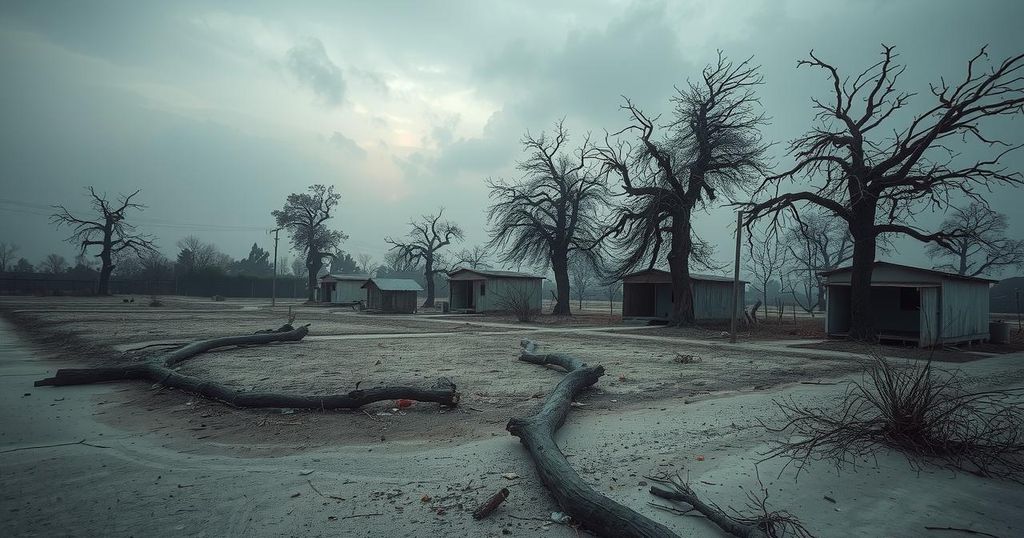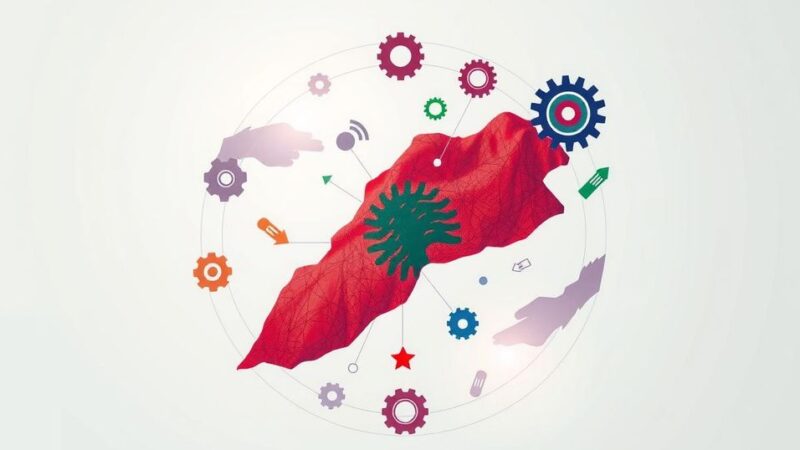In the eastern DRC, the conflict between government forces and M23 rebels has led to a severe humanitarian crisis, displacing over 400,000 individuals this year. Recent clashes near Goma raise alarm for potential regional instability as international calls for an end to violence grow louder. Diplomatic efforts continue to falter, leaving civilians caught in the ongoing turmoil.
The ongoing conflict in the eastern Democratic Republic of the Congo (DRC) continues to escalate, particularly around the city of Goma. Recent clashes between the Congolese army and the M23 rebel group have led to the displacement of over 400,000 individuals this year, as reported by the United Nations refugee agency (UNHCR). The humanitarian situation worsens as M23, reportedly backed by Rwandan forces, has gained significant territory, prompting fears of a broader regional conflict.
“The number of displacements is now over 400,000 people this year alone, almost double the number reported last week,” stated Matthew Saltmarsh of UNHCR during a news briefing in Geneva. UN Secretary-General Antonio Guterres expressed alarm over the violence, emphasizing the devastating impact on civilians and the potential for regional war. A desire for an immediate cessation of hostilities was articulated in an official statement.
Fighting erupted on the Kanyamahoro-Kibumba route, approximately 20 kilometers from Goma. Reports from military sources confirm M23 presence in Sake, where conflicts intensify. The Congolese army has responded with helicopter gunship assaults to counter the advancing rebels. Increased military activity indicates a growing urgency in addressing the conflict as the government holds crucial defense meetings.
Amidst the turmoil, General Peter Cirimwami, the military governor of North Kivu, was fatally shot near the frontline. Medical personnel from the International Committee of the Red Cross have been tending to numerous casualties from the escalating violence. Civilians are fleeing the conflict, seeking refuge in Goma, a city long affected by instability and insurgency.
Efforts to broker peace have been ineffective thus far, with recent diplomatic engagements falling short of producing a resolution. The historical backdrop includes M23’s previous capture of Goma in 2012 before it was retaken with UN support. The last ceasefire, declared in July, has also proven ineffective amid ongoing attacks, raising the specter of continued violence, despite Turkey’s recent offer to mediate between the DRC and Rwanda.
The eastern DRC has experienced chronic instability for over three decades, with various armed groups, including the M23, frequently contesting territory. Goma, a key urban center, has been a focal point for conflict, and recent clashes have exacerbated an already dire humanitarian situation. Despite numerous attempts at peace negotiations, including proposed mediation from Turkey, enduring instability remains as efforts to bring about a lasting resolution have repeatedly faltered. The M23 group, understood to have historical ties to previous conflicts in the region, briefly occupied Goma in 2012 before being ousted. Ongoing tensions with Rwanda have complicated efforts to establish peace, as the country has been accused of supporting M23 insurgents. The United Nations has alerted the international community to the increasing risk of a broader regional conflict, heightening the urgency for action and intervention.
The situation in eastern DRC remains critical, with over 400,000 individuals displaced by escalating violence between the Congolese army and M23 rebels. Despite fervent calls for an end to hostilities from the United Nations and ongoing military responses from the government, peace initiatives have yet again proven inadequate. As conflict persists, the potential for a wider regional war looms, emphasizing the need for immediate diplomatic intervention and humanitarian assistance to mitigate the significant toll on civilian populations.
Original Source: www.barrons.com






